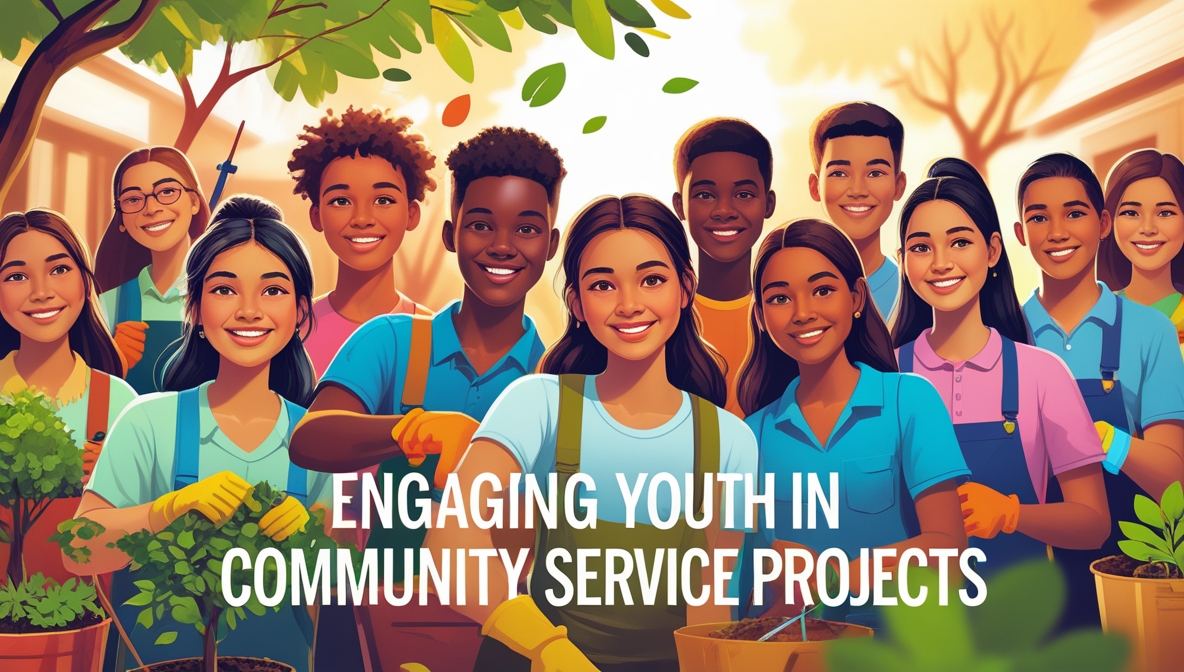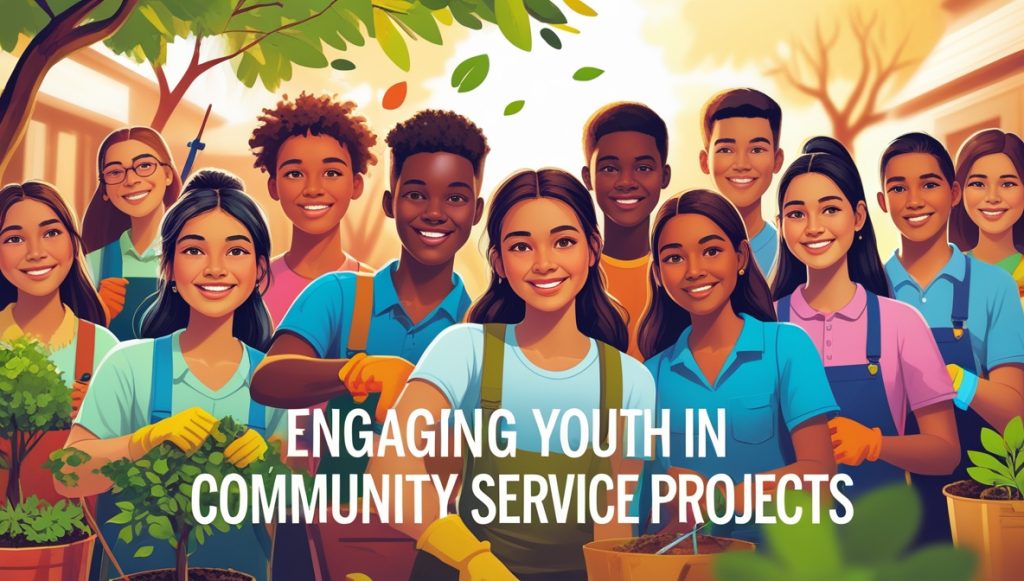Community service projects offer a gateway for young people to contribute their time and talents to make their neighborhoods better. This article answers the question: How can we involve young people in community improvement? It provides practical ideas and actionable steps to create opportunities that foster responsibility, teamwork, and civic pride.
Why Involve Young People?
Youth involvement in service projects builds a foundation for future leadership and social awareness. When young people work on projects that address local needs, they learn real-life skills, build confidence, and gain a sense of ownership in their communities. Service projects are not only about giving back; they also prepare participants for future challenges by teaching problem-solving, teamwork, and creative thinking.
Creative Ideas for Youth Projects
Below are several practical ideas to involve youth in community improvement. These suggestions can be adapted to fit the specific needs of any community or group of young people:
- Neighborhood Clean-Up Initiatives
Organize events where participants clean parks, streets, and other public areas. Create teams with defined roles such as waste collection, sorting recyclables, and landscaping. Include activities like mural painting or community gardening to add an artistic flair. - Mentorship and Tutoring Programs
Encourage young volunteers to help younger students with homework or reading skills. Local libraries, community centers, and schools can host tutoring sessions that provide both academic support and a positive role model experience. - Community Art Projects
Develop art projects that involve designing murals, sculptures, or installations that reflect the neighborhood’s identity. Such projects foster collaboration between local artists, students, and residents, resulting in lasting visual reminders of community unity. - Environmental Projects
Initiate tree-planting events, create butterfly gardens, or conduct energy conservation workshops. Youth groups can research local environmental issues and propose hands-on projects that reduce waste and promote sustainability. - Local History and Storytelling Projects
Engage youth in collecting and sharing local history through interviews, writing, or digital storytelling. By documenting the stories of long-time residents and significant community events, young people help preserve cultural heritage and learn from past experiences. - Technology-Driven Service Projects
Use technology to support community causes. Organize coding workshops for seniors, set up community websites, or create digital campaigns to raise awareness about local issues. These projects offer a modern twist that connects youth skills with service.
Steps to Launch a Community Service Project
When planning a service project, clarity and organization make the process smoother. Consider these steps:
- Identify Community Needs
Collaborate with local organizations, schools, and residents to determine which issues matter most. Surveys, community meetings, or social media polls can help gather input. - Plan and Set Goals
Outline clear objectives and desired outcomes. Define roles, responsibilities, and timelines for project tasks. A detailed plan helps in tracking progress and keeping participants motivated. - Engage Local Leaders
Involve community leaders, local businesses, and institutions. Their support can provide access to resources, venues, and expertise, increasing the project’s impact. - Promote the Project
Use social media, local newspapers, and community boards to spread the word. Highlight the benefits for youth participants and the community at large. Well-organized promotional materials can generate enthusiasm and drive participation. - Execute with Teamwork
Hold training sessions and orientation meetings to prepare participants for their roles. Providing clear instructions and encouraging teamwork ensures that every member feels confident about contributing. - Review and Celebrate
After completing the project, gather feedback from participants and community members. Host a small celebration to recognize everyone’s contributions. Acknowledging achievements boosts morale and sets the stage for future initiatives.
Tips for Keeping Youth Engaged
To maintain interest and participation, consider the following approaches:
- Offer Flexible Participation Options
Recognize that young people have different schedules and interests. Provide options for both short-term projects and ongoing commitments. Flexibility helps accommodate academic responsibilities and personal interests. - Incorporate Learning Opportunities
Integrate skill-building sessions into the projects. Workshops on leadership, teamwork, and practical skills ensure that every activity is an opportunity for growth. - Create a Supportive Environment
Encourage open communication and idea-sharing. A friendly and inclusive atmosphere empowers young people to voice their opinions and take initiative. Peer support and mentorship can turn service projects into lasting bonds and networks. - Recognize Achievements Publicly
Celebrate milestones with awards, certificates, or community shout-outs. Public recognition not only boosts individual self-esteem but also inspires others to participate in future projects. - Involve Youth in Decision-Making
Give young participants a voice in planning and execution. When youth have a say in how projects are run, they become more invested in the outcomes and develop leadership skills.
Community service projects present an effective way to build stronger, more connected communities. By including youth, these initiatives tap into fresh energy and ideas that drive change. The actionable ideas and organized steps presented here offer a practical framework for those seeking to involve young people in community improvement. Through active participation, learning, and recognition, young volunteers become instrumental in shaping the future of their communities.






